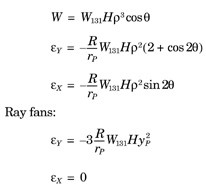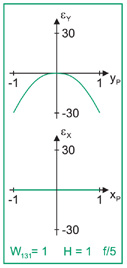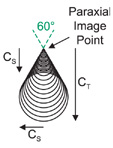Optipedia • SPIE Press books opened for your reference.
Explanation of Coma from Field Guide to Geometrical Optics
Excerpt from Field Guide to Geometrical Optics
Coma results when the magnification of the system varies with pupil position. An asymmetric blur is produced as the entire image blur is to one side of the paraxial image location. The image blur increases linearly with image height H.


For a given object point, each annular zone in the pupil maps to a displaced circle of light in the image blur. The blur is contained in a 60 degree wedge, and about 55% of the light is contained in the first third of the pattern. Depending on the sign of the coma, the pattern can flare towards (W131 > 0) or away from (W131 < 0) the optical axis. H is assumed to represent a positive image height.

Tangential coma CT and sagittal coma CS are two other measures of coma:

For a thin lens, coma varies with lens bending and the stop position. For any bending, there is a stop location that eliminates coma. This is the natural stop position.
J. E. Greivenkamp, Field Guide to Geometrical Optics, SPIE Press, Bellingham, WA (2004).
View SPIE terms of use.

